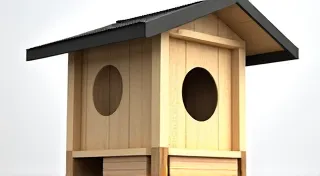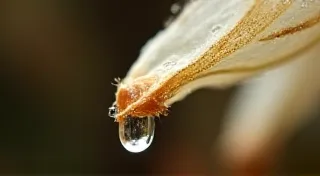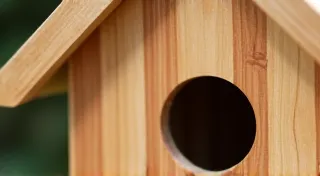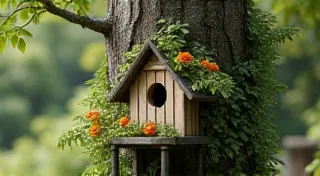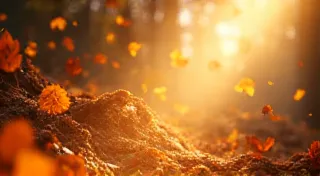Building Bird Feeders from Reclaimed Wood: Sustainable DIY
Give new life to old wood by building beautiful and functional bird feeders. This article provides step-by-step instructions and creative ideas for crafting unique bird feeders using reclaimed materials. Not only is this a rewarding woodworking project, but it's also a fantastic way to contribute to wildlife habitats and reduce waste. It’s a far more eco-friendly alternative to purchasing manufactured feeders, and allows you to truly personalize your backyard bird sanctuary. Beyond providing food, creating a welcoming environment, as described in scatterseed and sanctuary principles, fosters a true sense of place and belonging for birds.
Why Reclaimed Wood?
Using reclaimed wood for your bird feeder projects is a win-win. It's environmentally friendly, adding character and rustic charm to your feeders that new wood simply can't replicate. Old barn wood, pallets, or even discarded furniture pieces can be transformed into delightful homes for feathered friends. Plus, you’re giving those materials a second purpose! The weathered texture and unique grain patterns of reclaimed wood provide a visual appeal that enhances any garden setting. Many people find that the process of repurposing old materials adds a unique sense of satisfaction to their DIY projects. The inherent durability and resilience of reclaimed wood also means your feeders will stand the test of time, providing sustenance and joy for years to come.
Gathering Your Materials
Before you start building, you'll need to gather your materials. Here's a list of essentials:
- Reclaimed Wood: Pallet wood, old fence posts, barn wood – choose what you have available. Ensure the wood is free from harmful chemicals or treatments. Consider the size and weight of the wood as well, as larger feeders will require more substantial support. Sourcing your wood responsibly is key; look for local demolition sites or salvage yards to reduce your environmental impact.
- Fasteners: Screws, nails, or wood glue (exterior grade is best). Stainless steel screws are a great option as they resist rust and corrosion. Pre-drilling pilot holes is always recommended to avoid splitting the wood, especially when working with reclaimed pieces which can be drier and more brittle.
- Tools: Saw (hand saw or power saw), drill, measuring tape, sandpaper, safety glasses. A jigsaw can be useful for cutting more complex shapes. Don’t underestimate the value of quality tools; they’re an investment in your crafting enjoyment and the longevity of your projects.
- Optional: Wood sealant or stain (bird-safe, non-toxic). Always research the toxicity of any finish before applying it to a bird feeder. Choosing a natural, oil-based sealant can provide excellent protection without harming the birds.
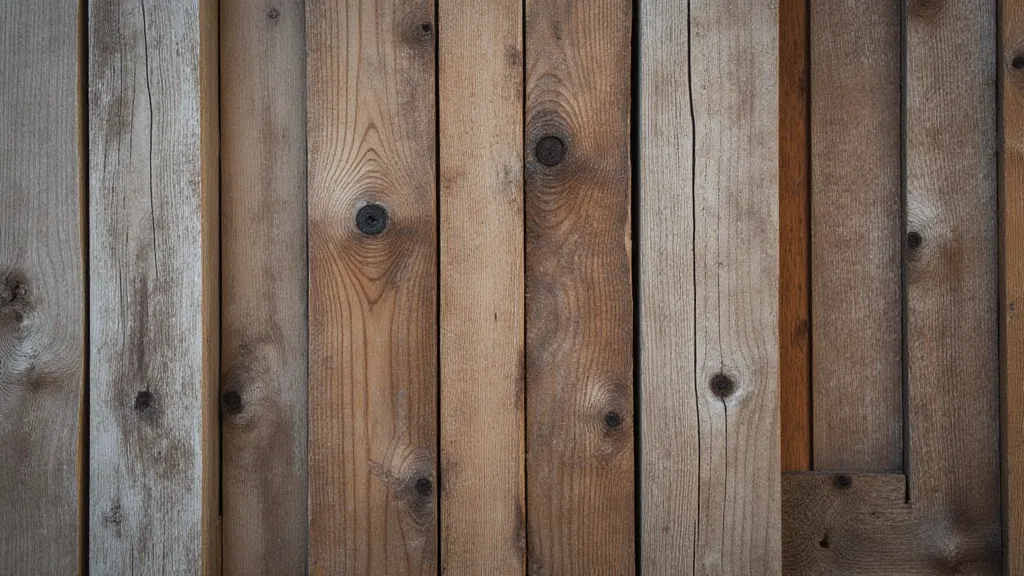
Bird Feeder Design Ideas
The possibilities for bird feeder designs are endless! Here are a few ideas to get you started:
- The Simple Platform Feeder: A basic platform made from a rectangular piece of wood, supported by four legs. Easy to build and great for larger birds. Consider adding a raised lip to prevent seed spillage.
- The Hanging Tube Feeder: A cylindrical feeder with holes drilled for perches. Can be made from a wider piece of wood, carefully shaped. Consider how drainage will work with this design. Adding decorative elements, like carved birds or painted accents, can add a personal touch.
- The House-Shaped Feeder: Create a miniature birdhouse that doubles as a feeder. A bit more challenging, but incredibly charming. Providing adequate ventilation is key to a healthy environment for the birds using this type of feeder, similar to the principles discussed when building a bluebird nest box. Proper ventilation and drainage are essential for the health and safety of your feathered guests.
- The Multi-Level Feeder: Use different sizes and shapes of wood to create a tiered feeder, catering to various bird species. This design requires careful planning to ensure stability and ease of cleaning. A multi-level design can also provide different seed options to attract a wider variety of birds.
Step-by-Step Building Instructions (Simple Platform Feeder)
- Cut the Wood: Cut a rectangular piece of wood (approximately 12" x 18") for the platform and four pieces for the legs (approximately 8" long). Accurate measurements are crucial for a stable and visually appealing feeder. Consider the grain direction of the wood for added strength.
- Assemble the Legs: Attach the legs to the corners of the platform using screws or nails. Ensure they are firmly secured. Pre-drilling holes can prevent the wood from splitting. Use wood glue in addition to screws or nails for added strength and durability.
- Sand the Edges: Sand all edges and surfaces smooth to prevent injuries to the birds. Use progressively finer grit sandpaper for a truly smooth finish. Rounded edges are particularly important to prevent birds from snagging themselves.
- Apply Finish (Optional): If desired, apply a bird-safe sealant or stain to protect the wood from the elements. Let it dry completely before use. Remember to research bird-safe finishes thoroughly. Consider applying multiple thin coats for best results.
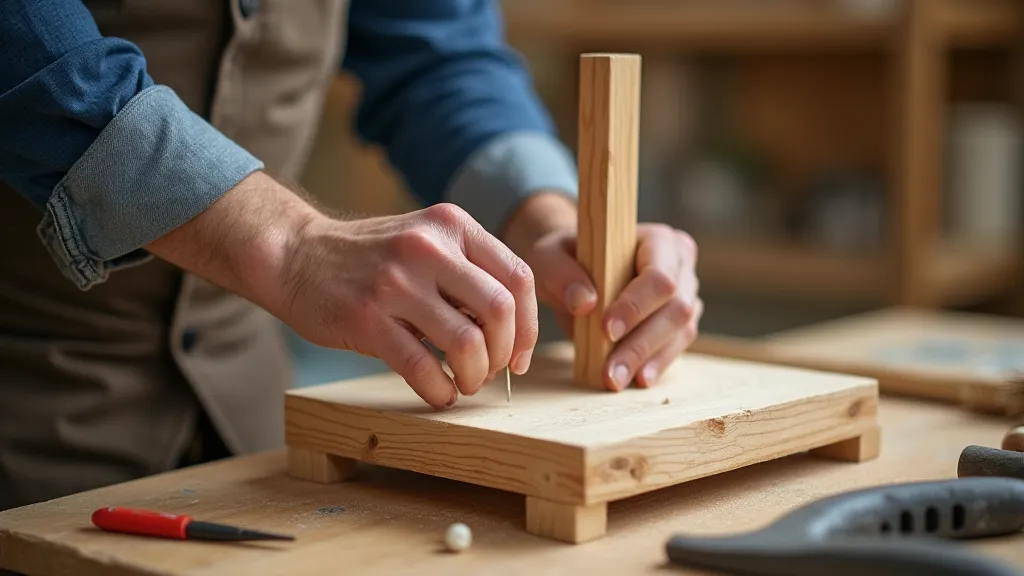
Tips for Bird-Safe Bird Feeders
- Use Untreated Wood: Avoid using wood that has been chemically treated. Pressure-treated wood, for example, contains chemicals harmful to birds. Look for wood with a natural patina, indicating it has weathered without chemical intervention.
- Sand Smoothly: Ensure all surfaces are smooth to prevent injuries. Birds can be delicate, and rough edges can cause harm. Regularly check your feeders for any rough spots that may have developed over time.
- Provide Drainage: Drill small drainage holes in the bottom of the platform to prevent water from accumulating. Standing water can breed mosquitoes and create unsanitary conditions. Ensuring proper drainage is crucial for maintaining a clean and healthy feeding environment.
- Clean Regularly: Clean the bird feeder regularly to prevent the spread of disease. A solution of mild soap and water works well for cleaning. Consider the importance of proper ventilation and drainage - vital for keeping bird habitats healthy, much like maintaining a properly designed wren house. A thorough cleaning at least once a month is recommended.
Attracting Birds to Your Feeders
Once your bird feeder is built and installed, you're ready to attract feathered visitors! Choose birdseed that is appropriate for the species you want to attract. Sunflower seeds, nyjer seeds, and millet are all popular choices. Placement is also key – locate your feeder in a visible area, away from predators. Consider adding a bird bath nearby to provide a source of fresh water. The more elements you incorporate into your backyard, the more attractive it will become to a diverse range of bird species. Think about the surrounding landscape and how it contributes to the overall habitat.

Beyond the Basic Feeder: Expanding Your Bird Feeding Ecosystem
Building a bird feeder is just the first step in creating a thriving backyard habitat. Consider adding native plants to provide natural food sources and shelter. Different bird species have different preferences, so research which plants are most attractive to the birds you want to attract. Providing a variety of food sources, from seed to fruit, will cater to a wider range of avian visitors. Think of your backyard as an ecosystem, where each element plays a vital role in supporting birdlife. The selection of plants should be driven by the needs of the birds you hope to attract, providing them with not just food, but also nesting sites and protection from the elements.
Conclusion
Building bird feeders from reclaimed wood is a rewarding and sustainable DIY project. Not only will you be creating beautiful and functional feeders, but you're also contributing to wildlife habitats and giving new life to old materials. So gather your tools and get building! With a little creativity and effort, you can transform discarded materials into havens for feathered friends and create a vibrant ecosystem right in your own backyard. Remember, the journey doesn's stop with building the feeder - it's about creating a welcoming space that fosters a sense of connection with nature and provides joy for both birds and humans.
